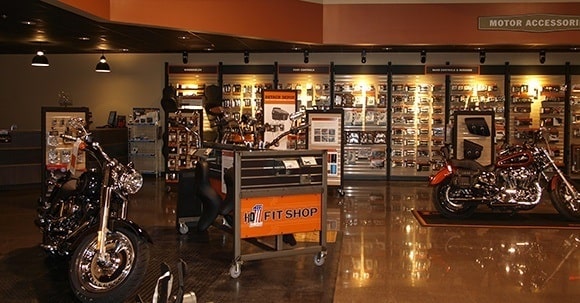Your Best Motorbike Shop for Quality Parts and Accessories
Your Best Motorbike Shop for Quality Parts and Accessories
Blog Article
Understanding Motorbike Gears: How to Enhance Your Riding Experience
In the realm of motorcycling, understanding the art of gear adjustment is important for boosting your riding performance. Effectively comprehending and making use of motorbike equipments can considerably influence acceleration, gas, and control effectiveness, transforming an ordinary ride right into a smooth, electrifying journey.
Understanding Equipment Mechanics
Exactly how do the intricacies of equipment auto mechanics influence bike efficiency? At the core of motorcycle characteristics, gear technicians play an essential function in converting engine power into movement, inevitably dictating rate and control. Gears, carefully crafted elements, allow motorcyclists to optimize torque and rate, ensuring a smooth change through various surfaces and velocities. The gear ratios, carefully designed, figure out the partnership in between engine transformations and wheel turns, affecting acceleration and fuel effectiveness.
Understanding gear auto mechanics starts with acknowledging the relevance of the transmission, which houses multiple equipments of varying sizes. These gears interact through a procedure known as meshing, where teeth of various equipments involve to send power.
In addition, the principle of equipment changing is indispensable to making the most of performance. Prompt and smooth shifts ensure that the engine operates within its optimum power band, preventing unneeded stress and boosting durability (motocross gear nz). By understanding these mechanical intricacies, cyclists can accomplish a harmonious mix of power, control, and performance, elevating their riding experience
Timing Your Shifts
Change timing proficiency is necessary for enhancing motorbike performance and enhancing the riding experience. Appropriately timed shifts make sure that the engine runs within its optimal power band, which is vital for preserving control, attaining smooth acceleration, and guaranteeing the long life of the motorbike. Bikers should develop an instinctive feeling of when to shift equipments, which involves recognizing the partnership in between engine changes per minute (RPM) and rate.
To master change timing, pay attention to the engine's sound and really feel, as these give vital ideas about when to alter gears. The perfect change factor normally occurs when the engine comes close to the top series of its power band without reaching the redline. Changing prematurely can bring about a lack of power, while shifting too late may trigger unneeded engine stress
Additionally, roadway conditions and riding design influence change timing. In comparison, throughout highway riding, fewer changes at greater speeds can be more proper.
Enhancing Fuel Performance
While mastering bike equipments is critical for performance, improving gas efficiency is just as essential for both economic and ecological reasons. Optimum fuel usage not just decreases operational costs however likewise minimizes the ecological footprint of riding. To achieve this, one need to recognize the elaborate connection in between equipment choice and engine performance.
Firstly, picking the best equipment at proper speeds can substantially influence gas intake. Riding in a greater equipment at lower speeds can lead to engine hauling, which is damaging to both fuel economic situation and engine health. Conversely, riding in lower gears at high speeds causes unneeded gas intake. Hence, keeping an ideal equilibrium by shifting gears in positioning with road problems and prepared for maneuvers is necessary.
In addition, normal maintenance plays a crucial function in gas effectiveness. Guaranteeing that the motorcycle is well-tuned, with tidy air filters and effectively blew up tires, can minimize and boost the rules of aerodynamics fuel wastage. Moreover, embracing a riding design that accepts gradual acceleration and smooth slowdown can add to far better gas economy.

Techniques for Smooth Transitions
Achieving smooth gear transitions is essential to boosting the riding experience and making certain the durability of a bike's transmission system. Correct equipment changing not just adds to a seamless experience yet likewise reduces deterioration on the mechanical parts. To understand the art of smooth changes, cyclists have to concentrate on a couple of essential strategies.

Second of all, clutch control plays a crucial role. Involving and disengaging the clutch smoothly requires practice. The clutch bar must be released progressively, permitting a smooth transfer of power from the engine to the wheels without causing a shock or sudden motion.

Adjusting to Road Conditions
Browsing diverse roadway problems is a critical skill for any motorcyclist aiming to maintain control and safety and security. Whether you're riding on wet surfaces, gravel roads, or browsing sharp turns, your ability to adapt your equipment usage and riding technique is extremely important. Understanding exactly how to readjust your gears appropriately can considerably impact traction and stability, making certain a much safer journey.
In comparison, when riding on crushed rock or uneven surface, lower gears are more suitable. Lower equipments supply much better control and enable you to react more swiftly to unforeseen adjustments in the road surface.
Sharp contours demand exact equipment monitoring to balance speed and control. Downshifting before entering a contour can assist preserve momentum while making sure the motorcycle stays stable throughout the turn. Constant practice in different conditions improves your capability to react and predict to adjustments in roadway appearance and slope.
Conclusion
Mastering motorcycle equipments dramatically boosts the riding experience by improving gas, acceleration, and control effectiveness. A thorough understanding of gear auto mechanics and specific change timing women's motorcycle riding jacket makes sure the engine operates within its ideal power band, while smooth transitions with effective clutch and throttle control rise convenience and performance. Adapting gear choice to numerous road conditions, such as utilizing higher equipments on damp surface areas and lower gears on crushed rock, additional improves handling and security. Eventually, these skills elevate the total trip.
Recognizing gear mechanics starts with recognizing the significance of the gearbox, which houses multiple gears of varying sizes. These gears engage through a process understood as meshing, where teeth of different gears involve to transfer power (mx gear nz). Gentle modifications to the throttle during gear shifts can stop used motor bikes jerky activities and maintain a consistent riding pace
Whether you're riding on damp surfaces, gravel roads, or navigating sharp turns, your capacity to adjust your gear use and riding strategy is paramount. Adjusting equipment option to numerous roadway conditions, such as using greater equipments on damp surface areas and reduced equipments on gravel, additional boosts handling and safety.
Report this page